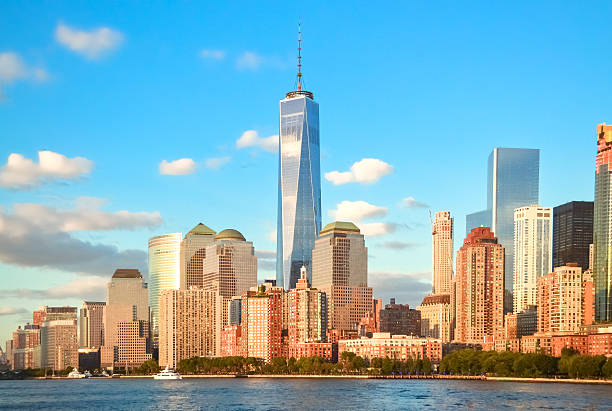The silhouette of American cities stands as a bold declaration of human ambition. Each tower, from its foundation to its spire, narrates a tale of innovation, challenges, and the undying spirit of progress. Let us embark on a journey through time and explore the evolution of high-rise design across the United States.
Evolution of high-rise buildings
Chicago, fondly known as the ‘Windy City,’ is where the story of high-rise design in American cities began. Amidst the ashes of the Great Chicago Fire of 1871 rose the determination to rebuild and re-envision.
The Home Life Insurance Building, completed in 1884, holds the revered title of the world’s first skyscraper. Its architect, William Le Baron Jenney, dared to use a steel-frame structure, freeing buildings from the weight constraints of masonry walls and sparking a revolution in architectural design.
This innovation in Chicago set the stage for a fervent era of high-rise construction. The city transformed into a canvas for architects, each vying to imprint their legacy.
The skyline expanded, not horizontally, but vertically. Structures such as the Rookery Building and the Chicago Board of Trade Building emerged, each representing the spirit of the age and the technological advancements of the time.
New York City and the race to the sky
While Chicago birthed the concept of high-rise design in American cities, New York City adopted and elevated it, with skyscrapers now becoming popular. The skyscraper race of the 20th century was a display of might and wealth.
The Woolworth Building, once dubbed the ‘Cathedral of Commerce,’ displayed neo-Gothic charm and, at 57 stories, was the world’s tallest in 1913. But the fervor did not stop there. The 1930s saw the Art Deco splendours of the Chrysler Building and the Empire State Building—structures that still captivate to this day.
NYC’s skyline became emblematic of America’s economic prowess. Each new skyscraper was more than just a building—it was a monument.
A testament to this is the Twin Towers of the World Trade Center, which, before their tragic loss, stood as sentinels watching over the city. Their legacy paved the way for the One World Trade Center, a symbol of resilience, hope, and unity. As of 2023, One World Trade Center in Lower Manhattan is the tallest building in the United States and the Americas.
Why were skyscrapers built?
Urbanisation was the drumbeat to which skyscrapers danced. With cities bustling and space at a premium, the solution was to build upwards.
But functionality was not the sole driver. The desire for prestige, corporate competition, and the allure of creating iconic landmarks were equally influential. Skyscrapers began to serve as corporate headquarters, luxury accommodations, and centres of commerce—all rolled into one.
As needs evolved, so did the design. The Seagram Building introduced the International Style to New York, emphasising verticality and a sleek facade.
By the 21st century, mixed-use skyscrapers became more prevalent. Buildings like the Time Warner Center combined retail, residential, and office spaces, redefining urban living.
READ ALSO: New 35-story high-rise apartment approved in San Francisco, CA
Evolution of high-rise design in American cities in future
The skyscrapers of tomorrow carry a mandate for sustainability. Biophilic designs, which incorporate natural elements into urban structures, are on the rise. The Salesforce Tower in San Francisco, for instance, integrates air purification systems and promotes energy efficiency.
In 2023, the race continues, not just for height but for innovation. Supertall structures like New York’s Central Park Tower push the boundaries of engineering while providing unparalleled luxury. Across the U.S., cities like Atlanta, Miami, and Los Angeles are joining the vertical revolution, each contributing to the ever-evolving story of the American skyscraper.
The evolution of high-rise design in American cities is both a reflection of the times and a beacon towards the future. As they pierce the heavens, they root us in history, reminding us of where we have been and where, given ambition and ingenuity, we can go.

